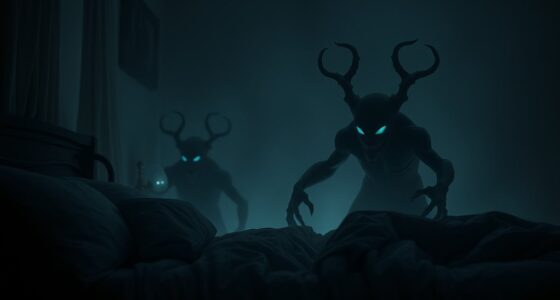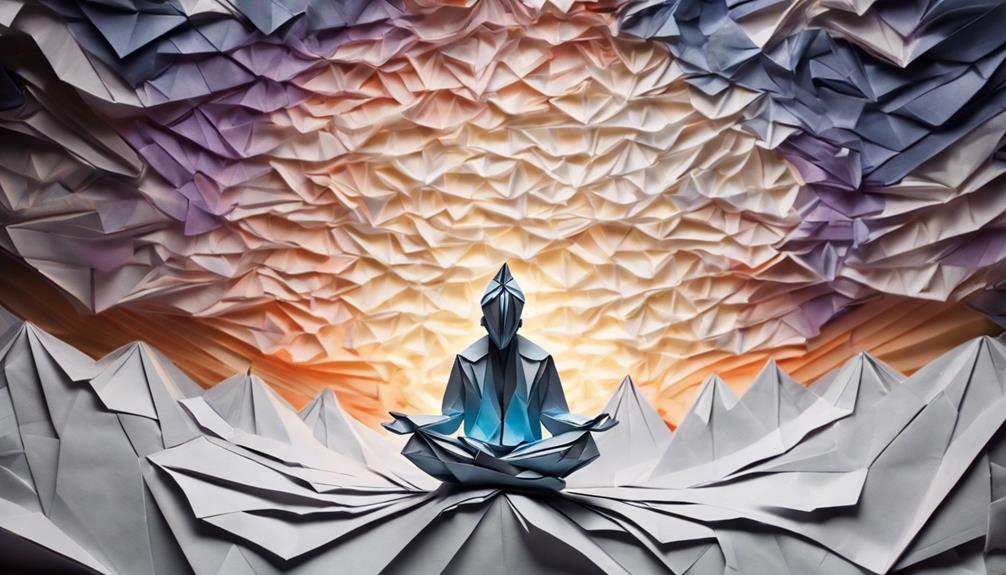Déjà vu feels like you’ve experienced something before, but science shows it’s likely a temporary brain glitch rather than something mystical. It happens when your brain’s memory and perception systems misfire, causing confusion between familiar and new experiences. Some speculate it could even hint at parallel realities, but current evidence favors neural miscommunication in areas like the hippocampus. To understand how your brain creates these mysterious moments, explore further the fascinating science behind déjà vu.
Key Takeaways
- Déjà vu is caused by temporary neural misfiring in memory and perception pathways, creating a false sense of familiarity.
- Scientific studies show overlapping brain activity in recognition and memory regions during déjà vu experiences.
- The phenomenon is best explained as a memory glitch or cognitive illusion, not evidence of parallel universes.
- Some theories speculate déjà vu as glimpses into alternate realities through quantum or multiverse concepts, but lack conclusive proof.
- The brain’s recognition system, involving the hippocampus, sometimes produces false signals, leading to feelings of familiarity.
Exploring the Phenomenon: What Is Déjà Vu?
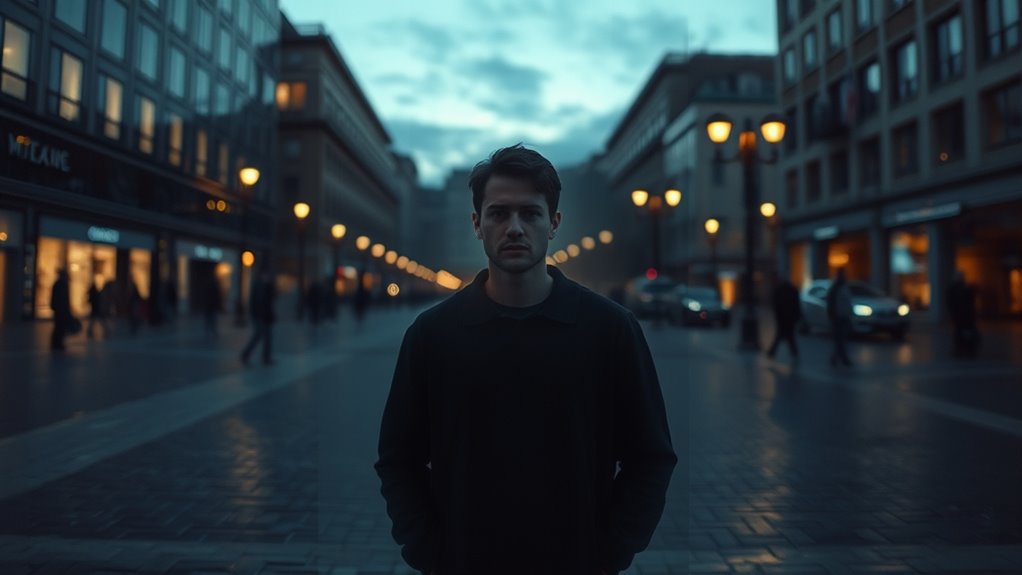
Déjà vu is a strange sensation that many people experience at some point in their lives, where a current moment feels strangely familiar, as if you’ve already lived it. Recent neuroscience breakthroughs have begun to shed light on this phenomenon, revealing how the brain processes memory and perception. Psychological interpretations suggest that déjà vu occurs when there’s a misfiring in the brain’s memory systems, causing new experiences to feel like familiar ones. Some theories propose that it results from a temporary glitch in how the brain compares present perceptions with stored memories. Understanding these mechanisms helps demystify déjà vu, showing it as a complex interaction between neural activity and cognitive processing, rather than something supernatural. This blend of neuroscience and psychology offers a clearer picture of why déjà vu happens. Additionally, research into brain activity patterns during episodes of déjà vu has provided valuable insights into the neural pathways involved.
Theories Behind Déjà Vu: Memory, Perception, and Beyond
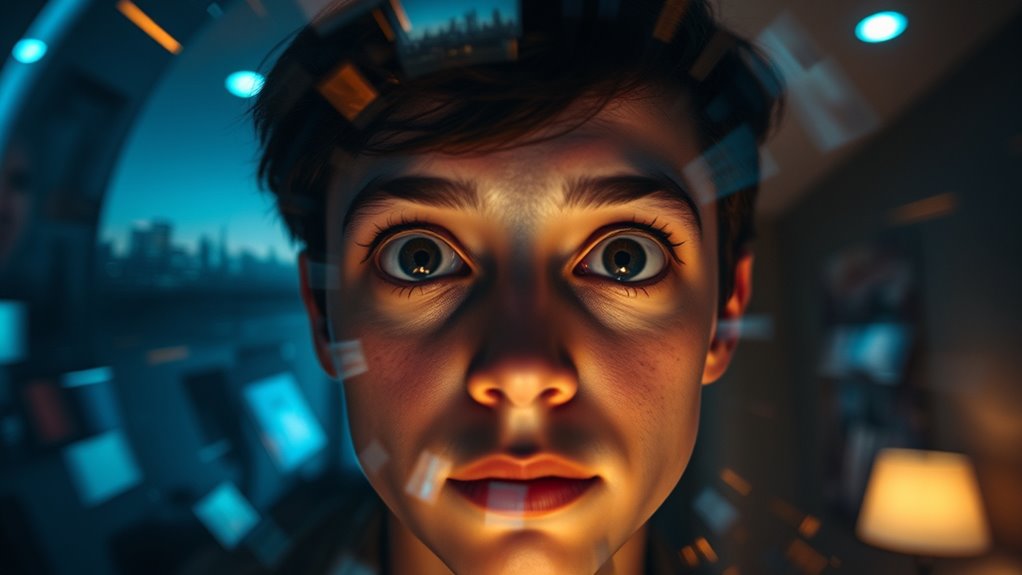
Several theories attempt to explain the complex origins of déjà vu by examining how our memory and perception interact. One idea suggests neural mechanisms cause a misfiring that creates the feeling of familiarity. Others propose cognitive illusions, where your brain mistakenly interprets a new experience as familiar due to overlapping cues. Here are key explanations:
Various theories explore déjà vu, focusing on memory, perception, and neural misfires.
- Dual Processing Theory: Simultaneous perception and memory processes briefly clash, making you feel you’ve encountered the moment before.
- Memory Recall Glitch: A mismatch occurs between short-term and long-term memory, triggering a false sense of recognition.
- Neural Mechanisms: Aberrant activity in the brain’s temporal lobes produces the déjà vu sensation.
- Perception and Attention: Distractions or incomplete perception can distort reality, leading to cognitive illusions that mimic familiarity.
- Home Theatre Projectors: Advances in projector technology have significantly improved the realism and immersion of visual experiences, which can influence how we perceive and interpret familiar environments.
These theories highlight the intricate links between neural mechanisms, memory, and perception.
Scientific Studies and Experiments on Déjà Vu

Scientists have conducted numerous experiments to unravel the mysteries of déjà vu, often using controlled settings to observe how and when the phenomenon occurs. These studies focus on neural pathways involved in memory and perception, revealing how certain brain circuits activate during déjà vu experiences. Researchers have found that déjà vu may result from cognitive illusions—misfires where the brain confuses current perceptions with past memories. In experiments, participants often report feeling familiarity when exposed to specific stimuli, suggesting a glitch in neural processing. Functional MRI scans show overlapping activation in areas responsible for recognition and memory. These findings support the idea that déjà vu is linked to temporary disruptions in how our brain processes familiar patterns, rather than evidence of alternate realities. Additionally, some theories propose that memory processing errors contribute to the sensation, highlighting the brain’s complex role in perception and memory integration.
Could Déjà Vu Be Evidence of Parallel Universes?
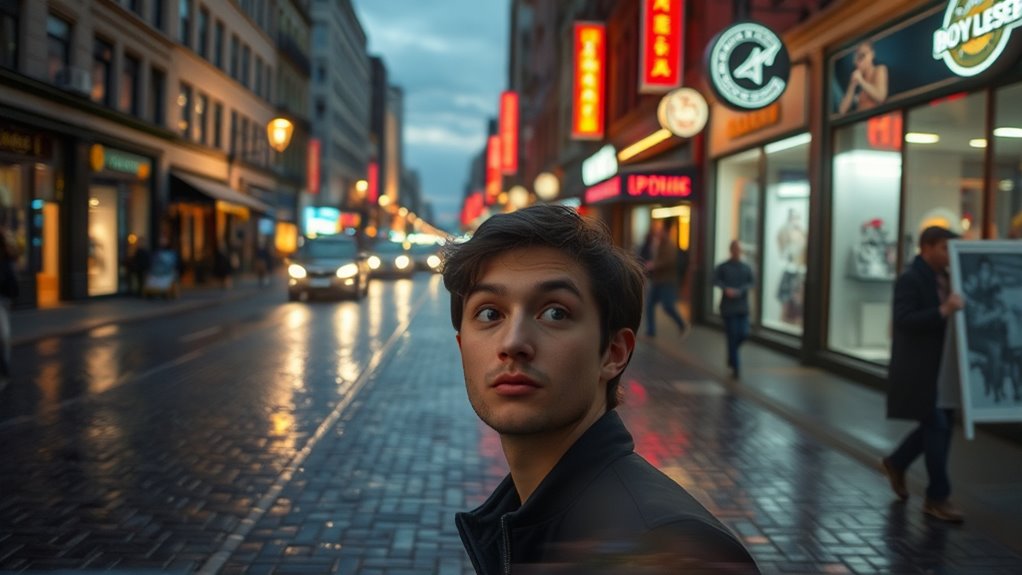
The neural explanations of déjà vu focus on how the brain occasionally misfires during recognition, but some theories suggest there might be more to the phenomenon. One idea is that déjà vu could be evidence of parallel universes, connected through quantum entanglement. The multiverse hypothesis proposes multiple realities existing simultaneously, and moments of déjà vu might be glimpses into these alternate worlds. Consider these points:
- Quantum entanglement links particles across different realities.
- Déjà vu could be a flash of memory from a parallel universe.
- The multiverse hypothesis supports the idea that consciousness might access other realities.
- This theory remains speculative but offers an intriguing scientific perspective.
- Understanding the neural mechanisms behind recognition errors can deepen our insight into the phenomenon.
While fascinating, there’s no definitive proof linking déjà vu directly to parallel universes—yet it sparks compelling questions about the nature of reality.
Understanding the Brain’s Role in Creating Déjà Vu Experiences

Understanding how the brain creates déjà vu experiences involves examining the complex neural processes that underlie memory and recognition. Your brain relies on neural pathways to quickly compare current experiences with stored memories. Sometimes, these pathways misfire, causing a mismatch that leads to a feeling of familiarity. This misfiring results in cognitive illusions, where your brain interprets a new situation as familiar, even if it isn’t. These faulty signals happen in the hippocampus and surrounding areas involved in memory processing. When neural pathways overlap or activate incorrectly, your brain mistakenly believes you’ve encountered the moment before. This process highlights how déjà vu isn’t just a mystery but a product of the brain’s intricate and sometimes imperfect mechanisms for recognizing and storing memories.
Frequently Asked Questions
Can Déjà Vu Be Linked to Specific Neurological Disorders?
You might wonder if déjà vu links to neurological disorders. It’s believed that memory anomalies and neural overlaps contribute to this sensation. When your brain experiences disrupted memory processing or overlapping neural pathways, déjà vu can occur more frequently. Conditions like epilepsy and certain neurodegenerative diseases sometimes increase déjà vu episodes, suggesting a connection. So, while not always linked, neurological issues can influence how often and intensely you experience déjà vu.
How Does Age Influence the Frequency of Experiencing Déjà Vu?
Think of your mind as a library where memories are books. As you age, your age-related memory changes, often making déjà vu less like a familiar story and more like an unfamiliar chapter. Younger people tend to experience déjà vu more frequently due to higher generational familiarity and more active memory pathways. As you grow older, these moments become rarer, fading like pages worn with time, reflecting shifts in your cognitive landscape.
Are There Cultural Differences in How Déjà Vu Is Perceived?
You might notice that cultural interpretations and belief systems shape how you perceive déjà vu. In some cultures, people see it as a spiritual sign or a connection to ancestors, while others view it as a simple memory glitch. These differing perspectives influence whether you find déjà vu intriguing, unsettling, or normal. Your cultural background can deeply color your understanding and emotional response to this mysterious experience.
What Role Do Dreams Play in Triggering Déjà Vu?
You might wonder if your dreams hold secrets to déjà vu. Sometimes, dream symbolism intertwines with your waking memories, creating that uncanny feeling. During sleep paralysis, your mind’s vivid imagery can blur reality, sparking déjà vu sensations. These moments hint that your subconscious processes, through dreams, might trigger déjà vu, revealing hidden connections between your dreams and waking life. It’s as if your mind’s trying to tell you something profound.
Can Technology or Virtual Reality Induce Déjà Vu?
You might wonder if technology or virtual reality can induce déjà vu. When you immerse yourself in virtual environments, neural pathways can be triggered by sensory distortions, creating familiar feelings. These digital experiences can mimic real-life memories, activating your brain’s recognition systems. As a result, you may feel an uncanny sense of familiarity, similar to déjà vu, because your brain interprets the simulated sensations as real, even though they’re artificially generated.
Conclusion
So, next time déjà vu hits, remember it’s more than just a fleeting moment—it’s a glimpse into the mysteries of your mind and the universe. Could these uncanny feelings be whispers of parallel worlds or just a glitch in your memory? The truth remains elusive, inviting you to wonder: is déjà vu a bridge to the unknown or simply your brain’s clever trick? Keep questioning, keep exploring—because the mystery is part of what makes us human.



